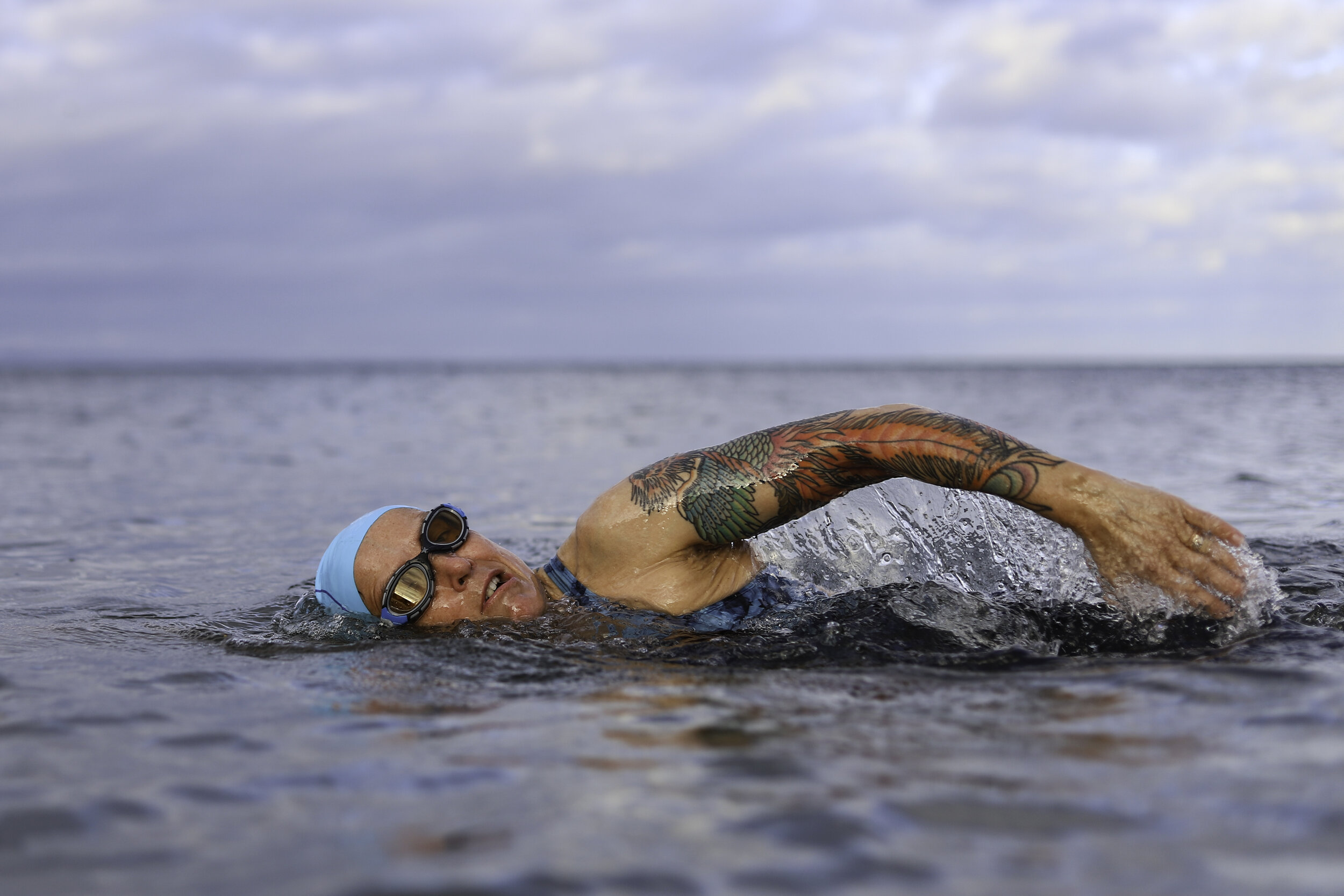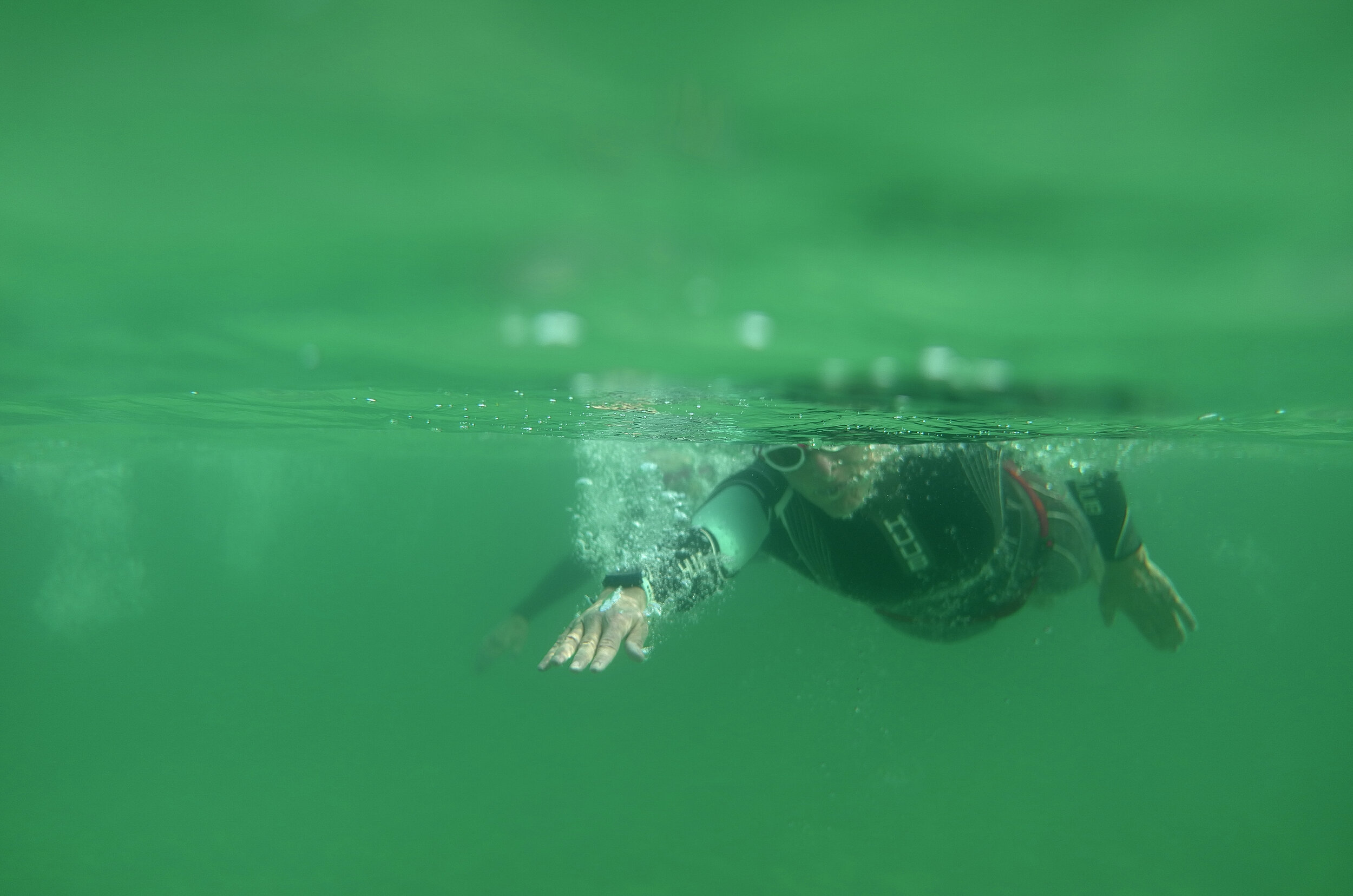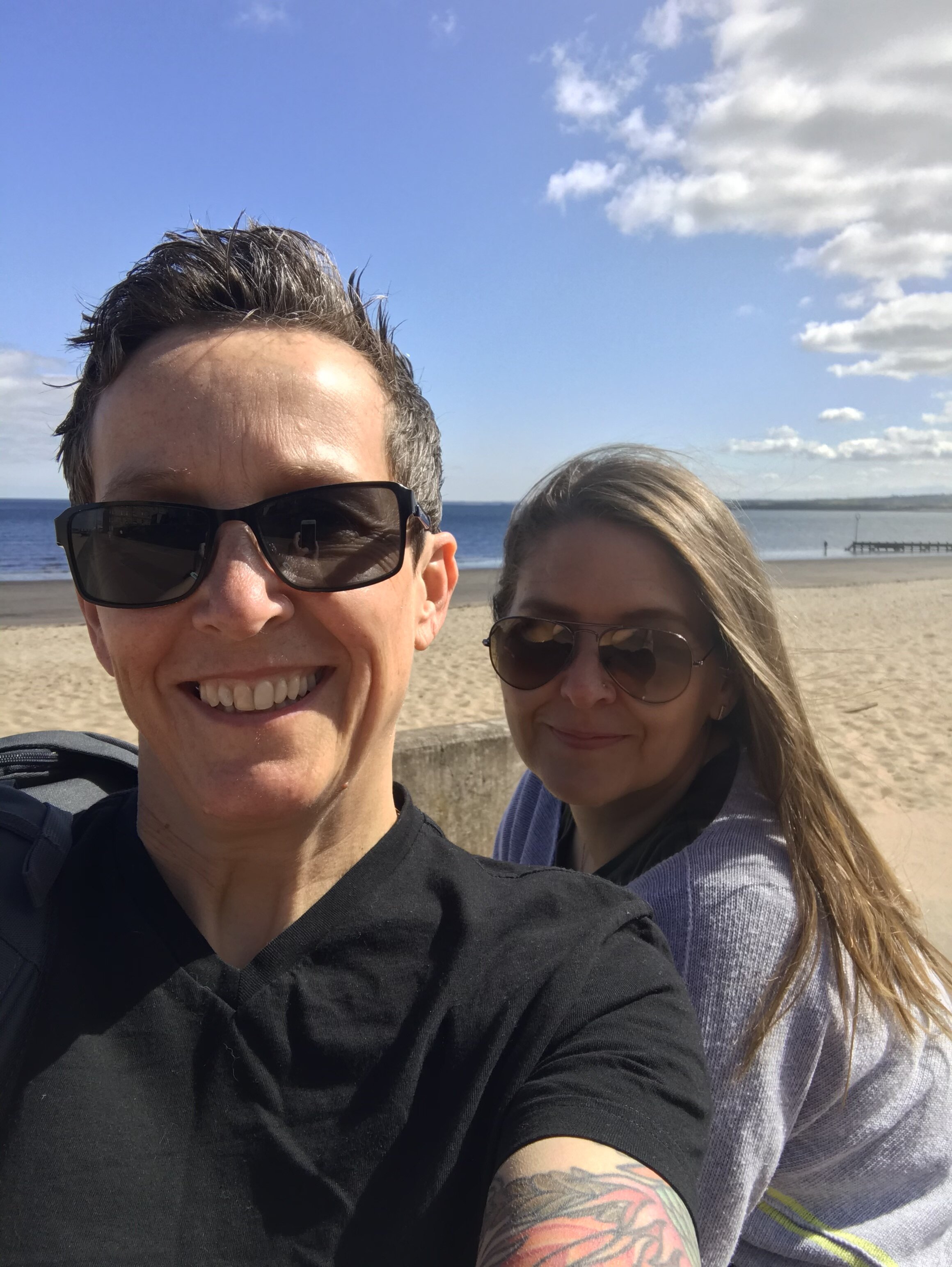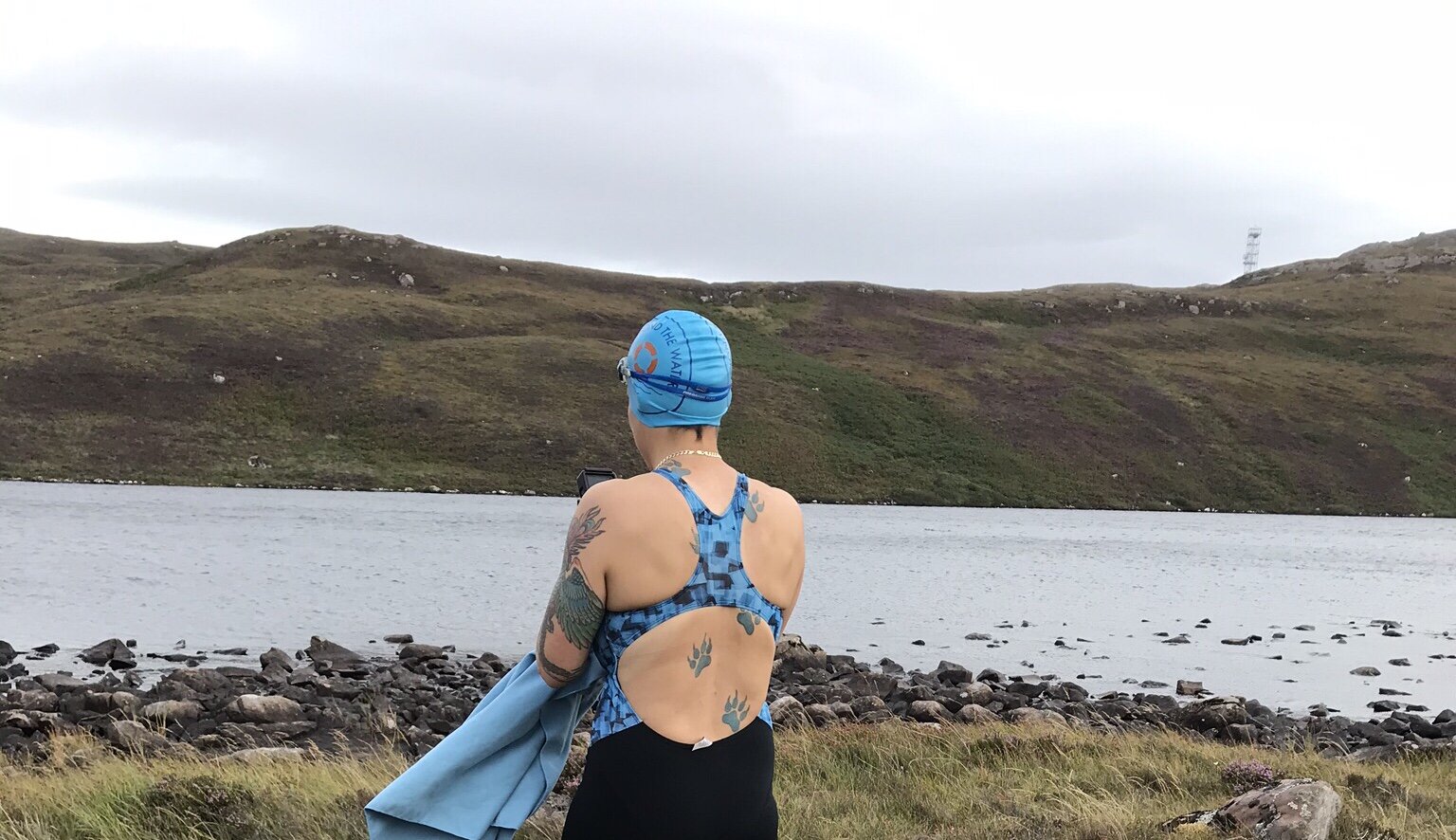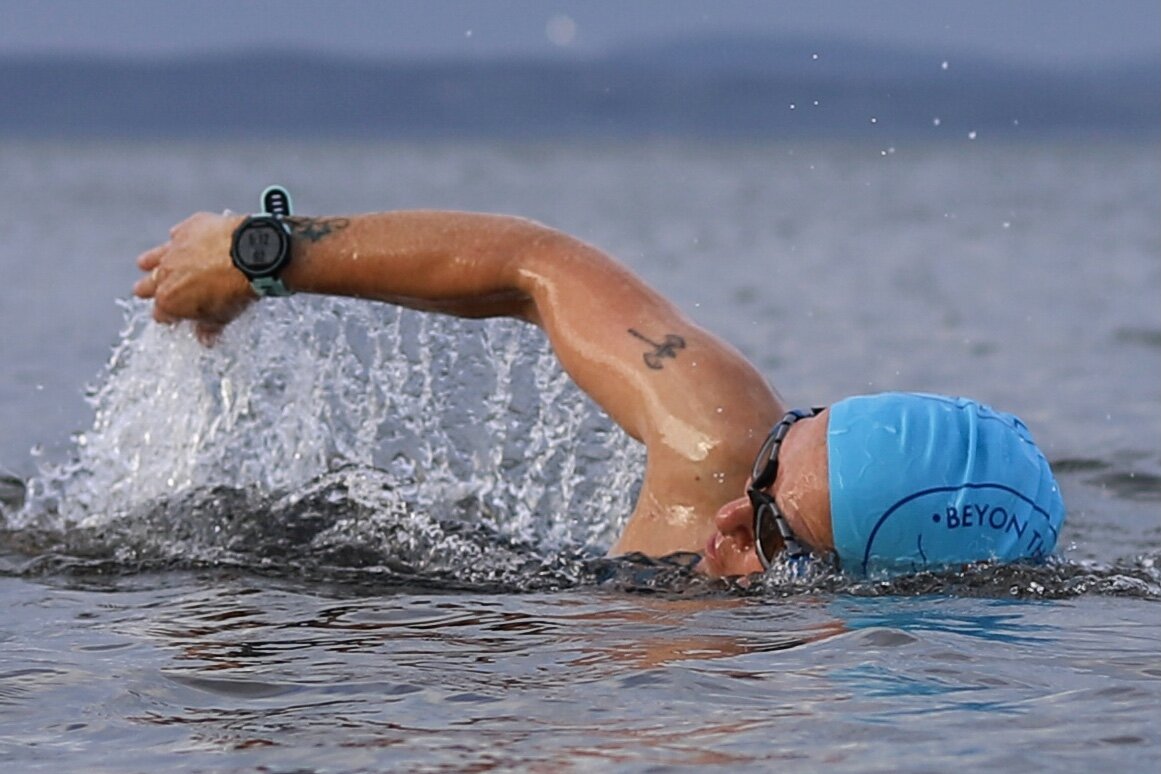Kate Gillwood - Edinburgh, Scotland
Swimming makes me feel bloody brilliant! Being in the water makes me feel strong and through my coaching I can share my love of the water.
It’s my happy place.
“I feel excited about swimming. It is the one thing in my life that is mine. I love to share the joy of swimming. Mostly I absolutely love being in the water.
I don’t love my body but when I get in the water I change, I become tall (I am not) and strong (I am quite strong and physically fit, always have been, it comes from both my Mum and Dad) but I also feel very capable and in charge of myself, I feel really good at something.
Swimming helps me get through difficult times.”
Swimming with mum
“I have always loved swimming with my Mum. She is now 80 and swimming has always kept her young, and I love that. COVID spoilt that last year which gives me a heavy heart. Mum is such a good swimmer. She never swam front crawl but has always done a cracking breaststroke. She is a diminutive and slight woman, but her shoulders always look so strong when she swims, even now at 80!”
Let's go back to where it started
“My parents gave me the love of water, particularly my Mum as she gave me the love of swimming outside. Dad used to take me to Guiseley baths (Yorkshire) and my Mum took me to the open air places - the River Wharfe at Appletreewick in Yorkshire; Otley Lido (Yorkshire – sadly it closed in 1993), the indoor swimming pool at my school Prince Henry’s Grammar School, Otley; the sea at Shell Island in Wales; but my heart has always been in Achmelvich Bay up the West coast of the Scottish Highlands.
“I have always had an innate love of the water. I don’t know where that came from, but it has always been there. I can recall the colour of the water in the pool with the sun shining through the window and the smell of chlorine.
“When swimming outside I clearly recollect the excitement of running in and out of the water, I love being outside and the freedom of being able to swim are strong and good memories.
“I never had a proper swim teacher but I recall starting swimming when aged five or six, but maybe it was younger.
“Swimming was just something we did in the 1970’s growing up. Swimming outside wasn’t ‘wild swimming’ or open water swimming’ as it is known today. It was just swimming.
“When I was at school I struggled with pool competitions as I never had technique coaching or a proper swimming costume. I relied on a hand-me-down bikini. When I was younger I remember wearing only the bottoms till it was no longer appropriate.
“Swimming, camping holidays and loving outdoors were just a part of my family’s and my life. Partly since growing up in the 1970’s you didn’t have the internet or any kind of digital technology games, most of our playing and fun was outdoors. It was the way I was raised. I was so fortunate.”
Swimming reignited
“When the Great North Swim (a 1 mile swim in Lake Windermere, the Lake District) was launched in 2008 it was an era when swimming outside wasn’t such a big part of my life.
“At the time I was a lifeguard in swimming pools in Islington, London, and during this time and afterwards I generally stuck to pool swimming, including swimming with the Out to Swim masters club. They are an LGBT club so offer a safe but competitive swimming environment for the LGBT community.
“I only competed in one race for the club and hated it. I did breaststroke which was my strongest at the time and I’d had no technique coaching. The pre-event nerves and fear of the other competitors' prowess was something which I did not enjoy. One race, and I was finished.
“Mum was keen to swim the Great North Swim with me, however sadly when she found out it was a wetsuit mandatory event, this put her off. But it triggered me to enter the Great Scottish Swim which reignited my love of the freedom of swimming in the great outdoors. I did the mile event and finished in 36 minutes, not bad for my first open water event. It was here where I swam a mile for the first time in a wetsuit. Swimming was now a huge part of my life again.
“I soon started swimming in the Women's Pond (officially called the Ladies Pond) at Hampstead, London, and Parliament Hill lido.
“During these years I was also swimming in regular open water events as it helped to have goals, giving me something to aim for. But as time has moved on, and my confidence of greater distances developed, my interest to swim in the organised events has diminished. I have realized that I don’t really enjoy the experience of swimming in large groups or in competitive environments.
“I do, however, enter slightly more challenging events such as the Lake Coniston end to end (5.25 miles / 8km) swim which I completed in September 2015.
“Other longer events I have swim in include the Hampton Court to Kingston Bridge 2.25 mile swim down the river Thames. It was great to do a different type of event, this time a river although I still have a question about swimming in the Thames. It was good to have my supporters able to walk the whole distance on the path beside me.
“I also swam in the Great Scottish swim for several years in a row, held at Loch Lomond. It is one of the most beautiful fresh water swimming spots in Scotland. I did the 1 mile, 2 mile and aquathon events, all great fun and good for building experience and confidence. The only negative thing with these swims are being in such a big body of water and having to do mile laps. I’m not a fan of laps.
“Now, I prefer to swim alone, with a couple of friends or in small groups.”
My Swimming now
“Over the last couple of years, I have moved into a different space with my swimming which was triggered by a swimming holiday in St Kilda, the Hebrides, in 2019. A small group of us were living on a boat for a week, swimming several times a day in the stunning waters of the west coast of Scotland.
“I was in heaven, my happy place. I was in my element.
“It was also the people who I met during this holiday. We were a group of swimmers with different experiences, including someone who was to become my coach, temporarily, but also became good friend. It was she who helped me believe that I could achieve more. During that week I realized that I wanted a bigger challenge, a solo swim of a longer distance. It was Sarah that suggested the length of Lake Annecy in France. It is a 15km swim so should take about 6 hours at the most, hopefully. I should have done it last September so, due to COVID, I am now having to wait to get over there, my training continues.
“I now regularly swim two to three times per week in the sea off Portobello beach, Edinburgh, which is just a five- minute walk from my house. I love it.
“I also swim at Threipmuir reservoir in the Pentland Hills and of course just about anywhere I travel to, involves a swim.
“Swimming makes me feel bloody brilliant! I will not lie though, sometimes I wish the water was a bit warmer but it's on my doorstep every day.
“I have since become a swim coach and am finding a way to make coaching a bigger part of my working life - see www.swimfreedom.co.uk. “
Kate, Do you have favourite swims or ‘sets’ that you prefer to perform in your swimming?
“I know drills and swim sets might be helpful, but I just do not enjoy or embrace them.
“Pre-COVID I had started to increase my attention to my technique knowing I needed to make some adjustments for the longer swim events. This was working well until the COVID effects restricted the pool operating hours. Our pools have been rarely opened for most of 2020 and early 2021. I ended up buying an above ground pool for my garden so I could continue training.
“When it was still open I had also got permission to practice eating and drinking, while treading water in the middle of the pool during some of my pool training. Refueling is vital for swims which take longer than two hours and is not as easy as it may sound. Trust me, it’s hard treading water and eating. I always remember in Lake Coniston trying to eat jelly babies and banana by the boat in the middle of the swim. They just don’t taste the same when you mix them with lake water. You also have to practice what food works for you during a long swim. It’s different for everyone and I am not yet sure I have found what is right for me. It’s a work in progress.”
Polar Bear Challenge
“In the winter of 2019, I signed up for the Polar Bear challenge, the classic category, which requires you to swim 200m twice a month, outdoors, starting in November till March. No wetsuit allowed; you swim 200m in just your swimming costume. During these months in Scotland the water temperature is between 3 and 12 degrees Celsius (37 and 53 degrees Fahrenheit).
“I took this challenge on because I wanted to get more acclimatised to the cold water since I am quite slim, get really cold and suffer ‘afterdrop’ quite badly. I have just completed my second Polar Bear winter swimming challenge. This time I did the Gold level which was 250m twice a month but a total of 5km over the whole period. I finished on a total of nearly 7km…all skins! I have now got 2 Polar bear badges; I love a badge.”
Kate in action
What is Afterdrop ?
When you swim in cold water the body cleverly tries to protect vital organs by reducing blood flow to the skin and limbs. Thus the core stays warm while the skin, arms and legs cool down. The process is known as peripheral vasoconstriction.
Shortly after you exit the water, peripheral vasoconstriction ends. Cold blood from your limbs and skin returns to your core where it mixes with warmer blood thereby causing your deep body temperature to drop, even if you’re warmly dressed and move into a warm environment. This is why you often only start shivering 10 to 15 minutes after leaving the water.
Kate, share with us your swimming strategy to reduce the after-drop effect
“I have a post-swim kit bag filled with important items. My changing mat to stand on rather than directly on the cold sand, a flask of warm water to rinse my feet after the swim to help with avoiding the after-drop and an extremely strict routine for getting dressed which includes a swimming onesie. I laugh at myself (and my friends join in), walking down my road to the beach in a onesie but who cares, right?
It is crucial to dress quickly after swimming in cold water. It’s taken a couple of winters, but I have that routine down to a tee.”
Tell us about some of the most enjoyable highlights of your swimming
“Just about all my swims along the west coast of Scotland and the Hebrides are special. It’s something about the colour of the water over the sand which resonates with me.
“My three month stay on Maui in Hawaii with my sister who lived there was also really special. The Pacific Ocean was a different thing altogether. The sea life was both incredible and somewhat scary. The waves were the biggest and most dangerous I have ever swum in.
“Also in Thailand when my wife Caroline and I stayed on Kho Tao. We travelled round the island for a day on a long boat, grabbing the opportunity to swim with reef sharks and shoals of silver/yellow fish that moved as one. It was an incredible day.
“A swimming story of difference - once when on the Isle of Coll in the Inner Hebrides I was on a deserted beach with friends. It was sunny, clear with a slight coolness in the air. It was perfect. I stripped off and waded into the beautiful water. My friends thought I was mad but it was fantastic. Then it got better, two or three nosy seals decided to investigate who or what I was, swimming up to me. I stood still, they gracefully circled round me, close enough to touch (which I instinctively did not do because that would be wrong). I held my arms up in the air out of the water in case they fancied a nibble but they didn’t, they were just saying hello. This was one of the most exciting things I have ever experienced when swimming.
“There are so many stories and experiences about swimming that have enriched my life.”
Do you have a swimming tip to share with the readers Kate
“Relax, it’s the most important thing in the water. It helps you float and breathe calmly and is good for your stroke.
“Be safe. Know the water you are getting into and what you need to do when you get out”
The best swimming technique tip you have received?
“Keep my head down more and turn it rather than slightly lifting when breathing.”
Swimming places you’d like to share
Definitely my home beach, Portobello beach, Edinburgh.
Anywhere up the west coast of Scotland.
Tell us a little about Kate
● I live with my wife, Caroline, with our two cats and a small puppy in a lovely house in the most beautiful place in the world – Scotland. We live 5 minutes from the beach. Caroline is a big part of my swimming. She is always supporting, encouraging and being there for me. I am so fortunate.
● I am a technology and cyber security expert.
● I was born in Galashiels in the borders of Scotland but raised from the age of three in Yorkshire.
● I am close to all my family which is blended and extended as my parents divorced when I was 8.
● When I lived in London, I played football for many years which was great. I miss not being able to play anymore. My body took a bit of a battering from the physical aspects of the game.
● I always loved sprinting and as a child the only dream I had was to be an Olympic sprinter (runner). I believe I could have achieved this as I was very quick.
● Outdoor Swimmer publication blog contributor and occasional article.
● 2020 set up Swim Freedom which provides open water swimming coaching, swimming technique coaching and an introduction to the SwimRun world.
Connect with Kate
Blog: Diary of a wandering swimmer
Web: Swim Freedom



